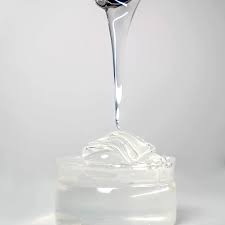Fiber filling gel is a versatile and innovative product that has gained popularity for its wide range of applications in various industries, including construction, automotive, and DIY projects. This guide aims to provide you with a detailed understanding of fiber filling gel, its benefits, and how to use it effectively.
What is Fiber Filling Gel?
Fiber filling gel is a specially formulated compound that combines fibers with a gel-like binder. The fibers can be made from various materials, such as fiberglass, carbon fiber, or natural fibers like cotton or hemp. The gel binder is typically a polymer resin. This combination results in a pliable and adhesive substance with excellent structural and bonding properties.
Benefits of Fiber Filling Gel
-
Strength and Durability: Fiber filling gel is known for its exceptional strength and durability. When applied to surfaces or used for repairs, it reinforces the structure and increases its longevity.
-
Versatility: It can be used in various applications, including repairing cracks and holes, reinforcing weak areas, and even creating molds and prototypes.
-
Waterproofing: Many fiber filling gels are water-resistant or waterproof, making them ideal for outdoor applications or areas prone to moisture exposure.
-
Ease of Application: Fiber filling gel is easy to work with and can be applied using common tools like brushes, rollers, or spatulas.
-
Adhesion: It adheres well to a wide range of materials, including wood, metal, concrete, plastic, and more.
Applications of Fiber Filling Gel
-
Construction and Repairs: Fiber filling gel is commonly used in construction for repairing cracks in concrete, reinforcing structures, and filling gaps or voids. It is also effective in repairing damaged or deteriorated wood.
-
Automotive Repairs: It is used to repair and reinforce automobile body parts, including bumpers, fenders, and panels.
-
Marine Industry: Fiber filling gel's waterproof properties make it valuable for repairing boats, canoes, and other watercraft.
-
Art and Sculpture: Artists and sculptors use fiber filling gel to create molds, sculptures, and other artistic creations due to its ease of use and versatility.
-
DIY Projects: Homeowners and DIY enthusiasts can use fiber filling gel for various projects, such as filling cracks in walls, repairing furniture, or crafting custom objects.
How to Use Fiber Filling Gel
-
Surface Preparation: Ensure that the surface is clean, dry, and free from loose debris, dust, or grease. Sand the surface if needed to improve adhesion.
-
Mixing: Follow the manufacturer's instructions for mixing the fiber filling gel. Typically, you'll need to combine the resin and hardener in the correct ratio and mix thoroughly.
-
Application: Use a brush, roller, or spatula to apply the gel to the desired area. Work quickly, as some fiber filling gel can have a relatively short working time.
-
Smoothing and Shaping: Use a tool or your fingers to shape the gel as needed. Ensure it conforms to the desired shape and contours.
-
Curing: Allow the gel to cure according to the manufacturer's recommendations. This may involve air drying, UV curing, or heating, depending on the product.
-
Finishing: Once cured, you can sand, paint, or finish the surface as required to achieve the desired appearance.
Conclusion
Fiber filling gel is a versatile and effective solution for a wide range of applications. Its strength, durability, and ease of use make it a valuable asset in construction, automotive repairs, art, and DIY projects. By following the guidelines provided in this comprehensive guide, you can harness the benefits of fiber filling gel and achieve successful results in your projects.


